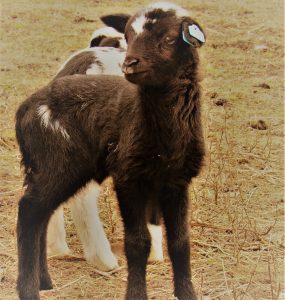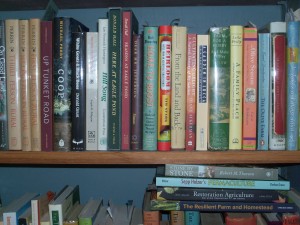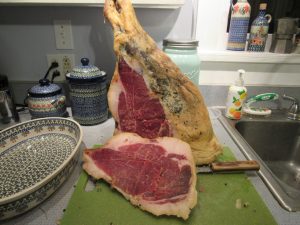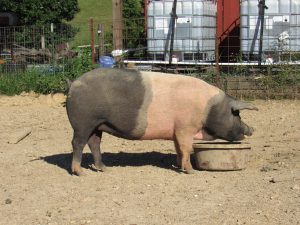
Ghost flights above the farm
I walk with determination from the house, past the barn and chicken coop and into the hoop-house, with the sole goal of catching a rabbit munching on my tender cole crop transplants. Sunrise is still an hour or more away, and the light is just enough to see that while the rabbits had been having their way (again), none are visible and within blasting distance of my shotgun.
Come high summer I may take a live-and-let-live attitude toward the cute little rodents. At a time when we are deep in the largesse of a bountiful garden, I can afford a bit of noblesse oblige. But in these first days of spring, a sacrificial rabbit is the only deal on offer. There are only so many veggies to go around, and I’m not willing to share, unless the rabbits do the same.
Earlier in the week we spent a couple of hours castrating a dozen ram lambs. We left another two intact, both large singletons, that showed remarkable growth. We will graze them through the summer with Joey, the big boss ram, and see how they shape up for possible use in fall breeding. This morning, through the far open door of the hoop-house, past the nibbled kale, the ewes and their lambs lie at rest, scattered across the corral. Quiet for once, they seem at peace with the morning. I know this will change. For now though, I simply take enjoyment in watching them.
I turn after a few minutes to walk back to the house. Passing the barn, I glance inside to see how our neighbor’s project is coming. He is enclosing for us a 10 x 16 storage room with a low ramp to house equipment and tools. Anyone with experience around barns knows how dusty they quickly become. After 20 years with the need, we are finally moving forward with the construction. The flooring is down and the framed-in walls up. Standing on the floor, I give a jump and find it firm.
Back outside, I approach our three beehives. A steady thrum of activity is audible from a foot away. My recently mandated downtime allowed me the opportunity to act as Cindy’s beekeeping assistant a couple of times this past week. Two days ago she completed a split (a form of swarm intervention), creating a new hive, while I relaxed nearby and drank a beer with drop-in friends. Now, in the predawn, the newly split hive hums contentedly.
Before heading to the house I stop back by the barn and cast a nasty look at the lawnmower. Yesterday I gave it a start for its inaugural cutting. Only after pulling the cord and listening as it idled much too slowly did I realize that I had forgotten to replace the spring on the governor last fall. It was a simple enough fix, which begs the question, why wasn’t it taken care of six months ago? That is one of those eternal questions I ask myself. The answer is that it is all too easy to put aside a repair and move on to another task. The second best response is to fix it on the spot. So, yesterday, that is what I prepared to do. Without thinking, I released the throttle to stop the engine. I then reached down to turn the mower on its side to repair the missing spring. It was at that exact moment that my pain receptors notified my brain that the blade was still spinning.
Thirty minutes later, after bandaging my bruised and bleeding fingers (each mercifully still attached), Cindy went back to her small tractor and continued mowing around the barns and outbuildings — but not before sagely suggesting that I call it quits and instead self-isolate in the backyard with a beer. I did, vowing to maintain proper social distancing from the mower, at least until next week.
……………………………………………………..
Reading this weekend: A Place on Earth (W. Berry).

 Near winter’s end, your flock
Near winter’s end, your flock

